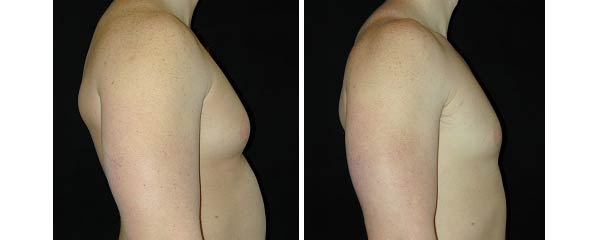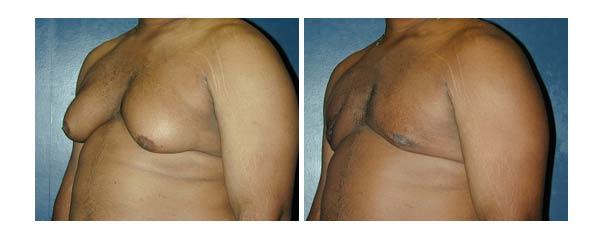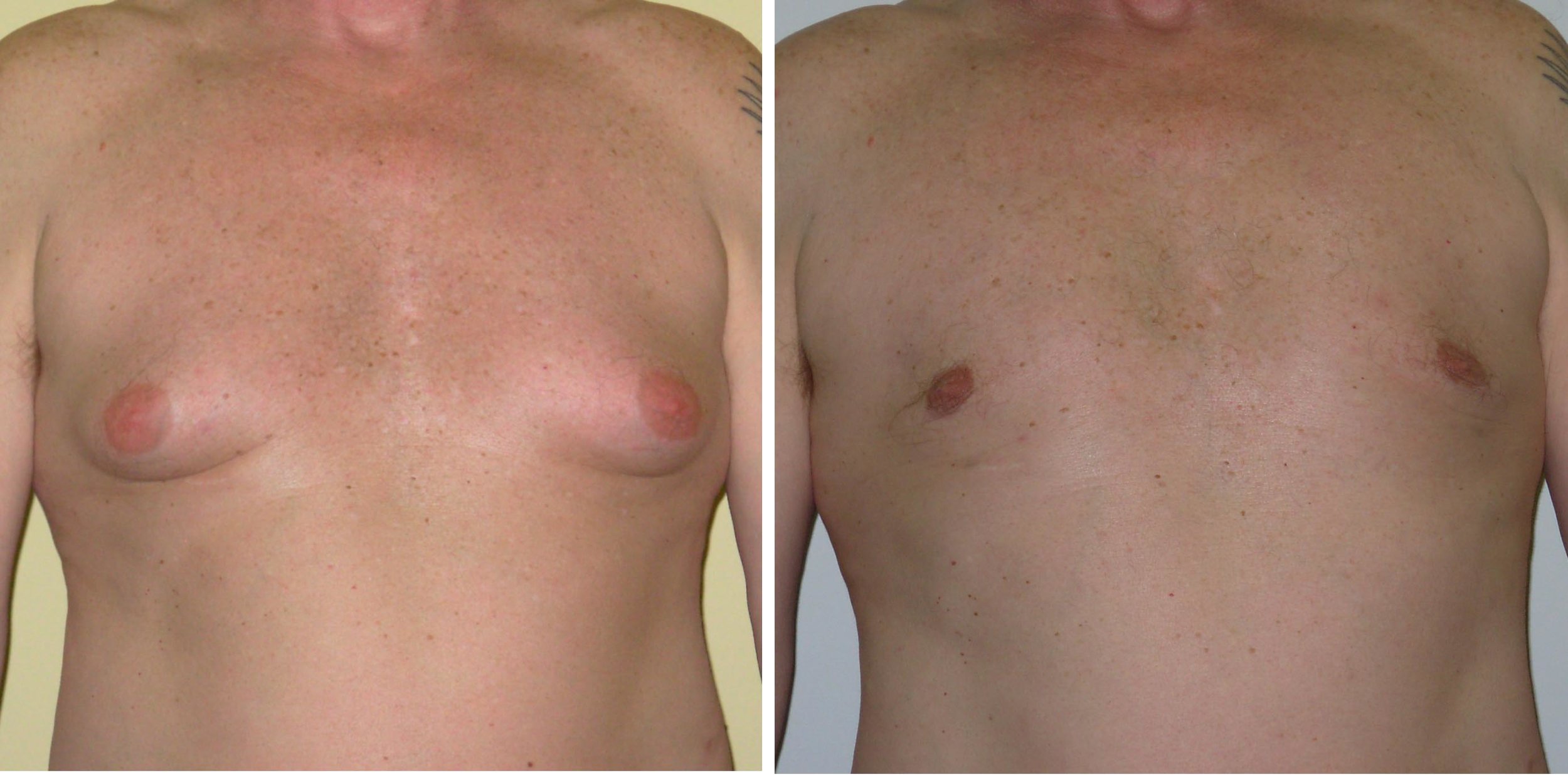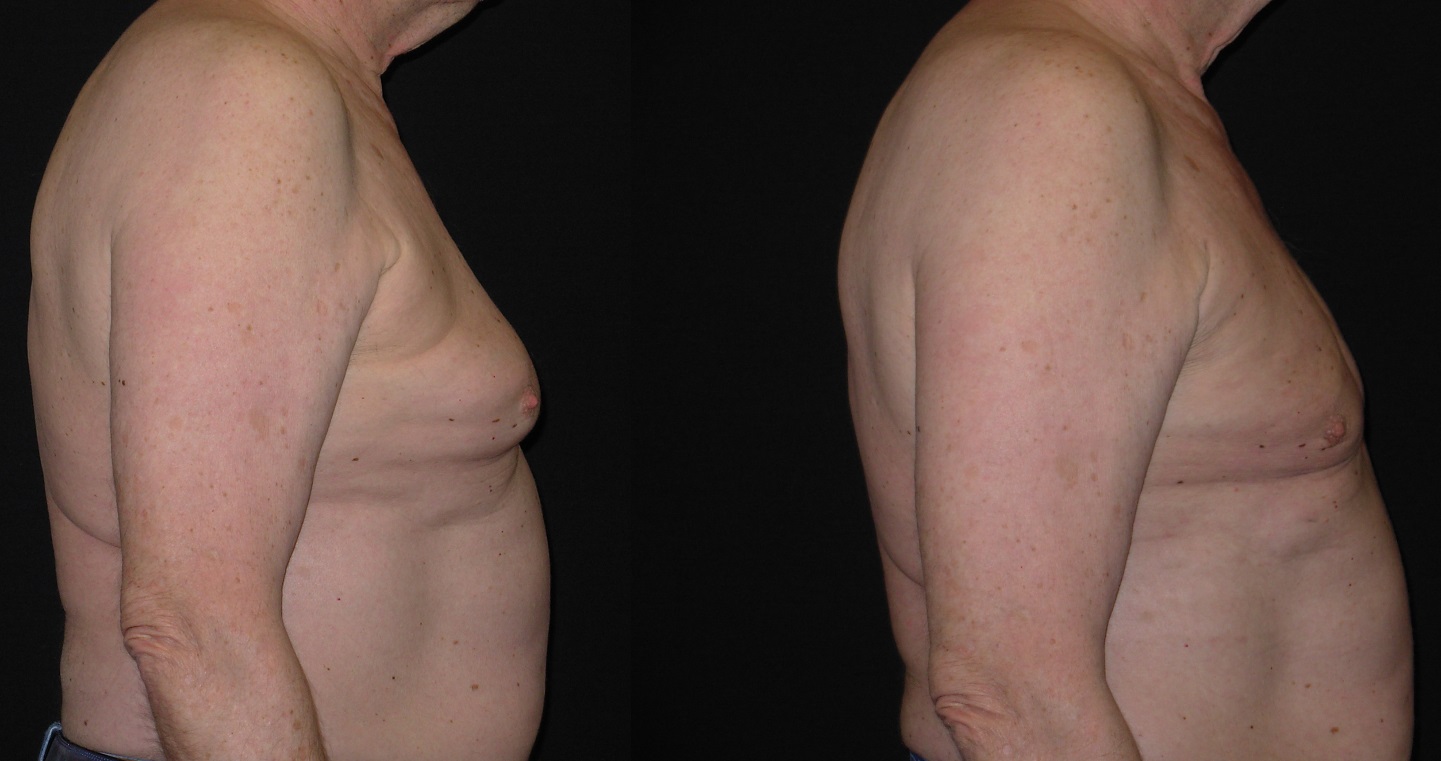What is Male Gynecomastia Breast Reduction?
Male breast reduction for gynecomastia is performed when there is excess breast and fatty breast tissue. It is not uncommon for males to develop excess breast tissue during development that commonly resolves on its own thereby not requiring surgery. It can also occur secondary to medications and less commonly due to certain tumors. For the majority, gynecomastia is a benign occurrence that is often a social embarrassment, which can be improved with surgery. This procedure reduces the size of your breasts, improves asymmetries and shape of the chest as well as, lifts the nipple and areola if they are droopy. Patients with this condition are often very self-conscious about the size of their breasts and typically refrain from taking their shirt off in public.
How is the procedure done/Where will I have scars?
There are different incision options depending on the size of the breast and presence of descent of the nipple-areola. Typically, a small incision is made along the curvature of the inferior aspect of the areola as well as a very small incision in the axilla and or in the chest fold. The very small incisions in the axilla and or chest fold allow liposuction removal and contouring of the excess fatty breast tissues and the areola incision allows direct access for removal of firm breast tissue that cannot be removed with liposuction alone. Sometimes, there needs be elevation of the nipple and areola on the chest wall that require additional incisions. Dr. Mezrow will discuss which technique you are a candidate for.
The procedure is performed as an outpatient. The procedure typically takes approximately 2-3 hours to perform depending on the size of the reduction. Most patients recover within 1 to 2 hours after surgery and are discharged home. It is important to arrange for someone to drive you home after surgery and to stay with you for at least the next day or two.
Check out Before and After photos of our clients
Consulting with Dr. Mezrow:
During the consultation, Dr. Mezrow will ask you about your particular concerns regarding your chest. This will help determine your expectations and determine whether they can be realistically achieved.
You should tell your plastic surgeon if you plan to lose a significant amount of weight, particularly if you have noticed that your breasts become smaller with weight loss. Your surgeon may recommend that you stabilize your weight before having surgery.
After obtaining a comprehensive medical and surgical history, Dr. Mezrow will examine your breasts and chest wall. The breast volume, asymmetries, breast skin tone, presence of masses, and nipple-areola position will be assessed.














